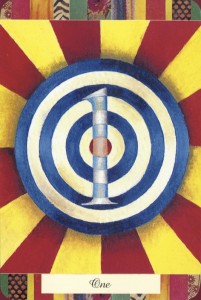Wise Understanding
 The first of the eight “folds” of the Buddha’s Eightfold Path is samma ditthi, traditionally translated as Right View or more recently, Right Understanding. But “right” can sound like a value judgment (“I’m right, you’re wrong”), when what is really meant is something closer to “wise,” or “skillful,” even “helpful” or “healthy.”
The first of the eight “folds” of the Buddha’s Eightfold Path is samma ditthi, traditionally translated as Right View or more recently, Right Understanding. But “right” can sound like a value judgment (“I’m right, you’re wrong”), when what is really meant is something closer to “wise,” or “skillful,” even “helpful” or “healthy.”
Here’s what Phillip Moffitt says about this in Dancing with Life:
“I sometimes use the phrase deep understanding instead of wise understanding to highlight the difference between ‘dharma understanding’ and ‘regular knowledge.’ Regular knowledge is surface understanding about events, which allows you to control conditions in order to fulfill your desires. In contrast, cultivating deep understanding enables you to find peace of mind in all circumstances, regardless of whether the surface conditions of your life are pleasant or unpleasant.”
When describing the Eightfold Path, Right View / Wise Understanding is normally listed first, but it’s not something you “do” or “get” and then go on to the next step. It is a way of setting off in the right/wise direction, but it’s also the result of following the Path, because doing so will naturally lead to a deeper, wiser understanding of how to live without suffering.
Here’s what Phillip has to say:
“It is taught that right view is understanding and framing your experience through the Four Noble Truths. Right view is also the understanding that your actions have consequences. Your first encounter with wise understanding may come from a personal experience of suffering so overwhelming that you realize there must be a better way to cope with life. Or it may arise out of an urgent need to find some meaning in your life that while not unhappy, seems superficial….Through wise understanding you clarify what really matters to you and formulate a set of values by which to live.
“Right view comes at the beginning of the Eightfold Path because without realizing that there is dukkha [stress, suffering, some nagging sense of dissatisfaction] in your life and understanding that you can do something about it, you would never be motivated to start. Wise Understanding is also the continuous, cumulative result of practice.
“For this reason, it is useful to think of the Eightfold Path as both a sequence of eight steps that follow one after the other and as an interconnected set of eight energetic practices that relate circularly and directly to one another, such that wherever you start on the path is beginning. Whichever aspect of the Eightfold Path you focus on, you engage all the parts directly or indirectly. And if you explore any of the eight factors in sufficient depth, it will lead you naturally to another.”
Next up: Wise Intention.
